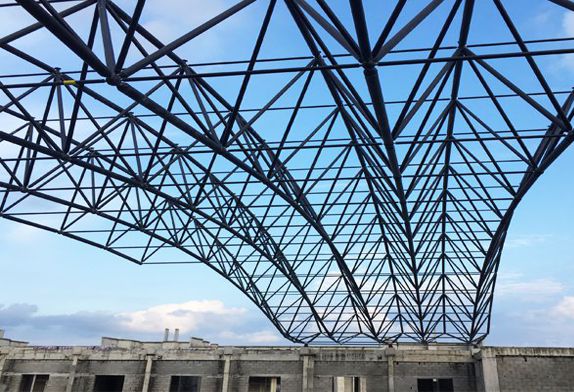
SPACE CAGE STRUCTURES are systems that can provide full distributions of hyperstatic and three dimensional loads. To understand the hyperstatic structure of Space Frame systems, a short comparison with alternative plane frame systems will suffice.
In plane cage frame systems (in scissor roof systems) the carrier construction is formed in the same plane. The scissors manufactured in this way are distributed in two dimensions on the same plane in the roofs (Fig. 2.a). Planar roof scissor constructions made in a similar manner are arranged parallel to each other on the roof and are connected to each other in a perpendicular direction. For these reasons, load distributions are carried out in perpendicular planes. Because of this, the steel elements are exposed to large loads as they can be transferred to a restricted geometry, which results in structural designs made with very heavy sections, especially in large openings.
Furthermore, the reactions occurring between the plane shear roof and the carrier structure cannot be distributed in a very stable manner, which makes the carrier infrastructure more costly.
However, space cage systems provide best load distribution by connecting the lower horizontal and upper horizontal rods, which form itself from the first support, to the diagonal rods in 3D. (Fig. 2.b) The sudden and large loads that can occur in this vault are divided into small pieces and transferred to the knot elements by the rod elements of circular diameter with minimum diameter. In addition, since moments are zero in point node elements, the node elements do not transmit dome effect and moment. All elements are assumed to be subjected only to axial pressure and tensile forces.











 About Us
About Us 2021-07-30
2021-07-30


